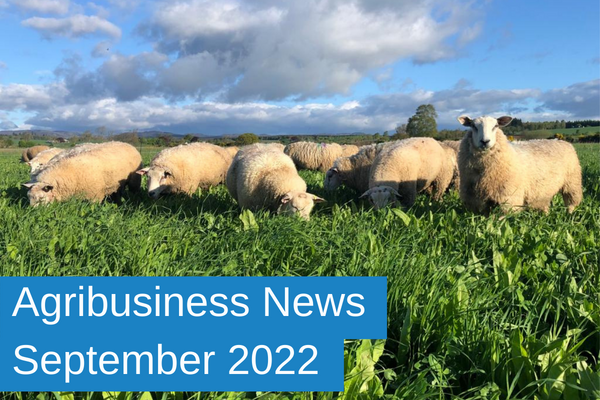Agribusiness News September 2022 – Sector Focus: Sheep
1 September 2022Planning forward
Optimising sheep rations to boost performance and keep costs down this winter.
Volatile input prices have continued to put pressure on all areas of livestock production throughout 2022. These do not look set to settle as we approach winter. It is essential in order to boost profitability of flocks over the coming season that we plan ahead and look to increase efficiencies of production.
Source: adapted from AHDB, Cereal and Oilseed Markets
Making the most from forage
To optimise sheep rations for all classes of stock this winter, it is important to know what quantity and quality of forage is available on farm. To assess if there are sufficient stocks to see through the winter months until the re-growth of spring grass. Analysing forage gives an indication of dry matter, energy available and protein content of the forage allowing more accurate calculation of bespoke rations. If grazing forage crops over winter such as forage rape/hybrids, stubble turnips, swedes, or kale, calculating the dry matter yield of the crop can help to not only calculate the required area for the given category and number of stock but also when stock need to be moved to ensure more efficient utilisation of the crop, and thus better results from grazing.
Accurate feed budgeting on farm this winter will allow for optimisation of forage use in the ration. Concentrates can then be used to make up for any shortfalls, potentially limiting supplementary feed costs on farm. For further information on feed budgeting and calculating forage availability please refer to A Guide to Feed Budgeting| Farm Advisory Service (fas.scot).
The table at the bottom of the page, highlights the difference in dry matter required and cost per dry matter intake (DMI) for differing levels of energy in silage, with a difference of £0.012/day between a 9.5 MJ/kg DM and 11.5 MJ/kg DM ME silages. For 500 ewes this equates to £6/day and £540 over the 90-day period from mating to 8 weeks pre lambing, highlighting the importance of forage quality from a profitability perspective.
Optimising protein use on farm
Analysing forage availability whether it is silage, grazed grass or in situ cover crop can allow the calculation of the microbial protein/energy balance in the ration from forage. By balancing protein available for microbial protein synthesis with fermentable energy in the diet, we can enhance potential rumen performance improving intakes, digestibility of the diet and overall protein utilisation. This allows for a more accurate assessment of protein requirements in the diet, limiting the potential need for supplementary protein.
Target stock most in need
Body condition scoring of ewes and lambs can help to manage feed costs throughout the winter, by targeting the stock on farm that are most in need of supplementary feeding. When outwintering ewes or store lambs body condition should be assessed throughout grazing to allow poorer lambs to be separated and fed a supplementary ration keeping lambs in good condition to finish on forage. Similarly, ewes in the early stages of pregnancy that are in good body condition 3.0-3.5 should be fed to meet requirements for maintenance, with leaner ewes <3.0 fed to allow for body condition gain over the winter period to get them to target pre lambing.
Forward planning in terms of assessing grazing availability, feeding good quality forage and accurate rationing can go a long way to mitigate the impact of feed costs this winter while ensuring optimum performance of the flock.
Lorna Shaw; 07796 615719
Sign up to the FAS newsletter
Receive updates on news, events and publications from Scotland’s Farm Advisory Service



